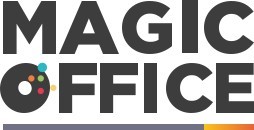
The evolving role of the chief risk management officer
Shifting responsibilities and expectations
The role of the Chief Risk Management Officer (CRO) ain't what it used to be. No longer just the watchdog for financial threats, the CRO now navigates a complex web of regulatory, operational, and compliance risks, transforming this into one of the most influential positions in any company. According to a recent study, 65% of organizations have adapted their risk management strategies over the past five years as new types of risks have emerged. This shift demands CROs to adopt an all-encompassing approach to enterprise risk management (ERM).
The rise of ERM
The traditional view where CROs were concerned primarily with compliance risks and financial risks is outdated. Today, ERM involves integrated risk management strategies that must align directly with the company’s core objectives. A study by the Committee of Sponsoring Organizations of the Treadway Commission (COSO) stresses the critical role of ERM in providing a structured framework for identifying, assessing, and managing risks. Notably, COSO's guidelines are gaining traction internationally, even beyond the United States and into markets like India and the UK.
Case study: citi's innovative risk management framework
Citi is a trailblazer. By embedding risk management into its daily business operations, Citi has developed a culture where every employee is aware that risk management is not just a box to tick but an integral part of the business. According to a report, Citi’s approach to operational risk management includes real-time risk analysis reports that help in early identification and mitigation of risks. Furthermore, it's noteworthy how Citi’s framework could serve as a model for companies striving to enhance their ERM protocols.
A paradigm of risk officer integration
The integration of CROs into senior management ensures they have a voice at the decision-making table. As emphasized in a 2022 report by Payscale, the average salary of a CRO in the U.S. reflects the pivotal role they now play, commanding between $170,000 and $300,000 annually. This speaks volumes about how companies value risk officers in maintaining a strategic view of risks across the organization.
Key responsibilities of a chief risk management officer
Primary duties and tasks
The chief risk management officer (CRO) oversees risk management strategies, ensuring that the organization is prepared to face various threats. The CRO keeps the board of directors informed about risks and mitigation efforts, enhancing their decision-making capabilities. According to a report, risk management officers play a pivotal role in fostering the financial stability of businesses.
Strategic risk planning
One key responsibility of the CRO is strategic risk planning, which involves identifying potential risks and developing plans to mitigate them. A study by the Committee of Sponsoring Organizations of the Treadway Commission (COSO) highlights the importance of this role in managing operational and financial risks.
Focus on compliance risk
Compliance risk management is another critical task. The CRO ensures the company adheres to legal standards and industry regulations, which is essential for avoiding penalties and maintaining reputation. The Sarbanes-Oxley Act exemplifies the significance of compliance in corporate governance.
Enterprise risk management (ERM) initiatives
The CRO develops and implements enterprise risk management (ERM) frameworks to assess and manage all types of risks across the organization. Effective ERM practices are vital for maintaining business continuity and resilience. According to experts from Citi, consistently applying ERM practices can lead to better risk visibility and proactive risk management.
Monitoring and reporting
Regular monitoring and reporting of risk metrics ensure that senior management and the board of directors are aware of risk exposures and can take informed actions. CROs must ensure that risk assessment reports are accurate and up-to-date, enabling strategic decision-making.
Risk culture and communication
CROs also foster a risk-aware culture within the company. This involves promoting open communication about risks at all levels of the organization and ensuring that employees understand their roles in risk management. CROs often conduct training sessions and workshops to educate staff on risk management practices.
Collaborating with other executives
The CRO works closely with other executive officers, including the chief financial officer (CFO) and the chief executive officer (CEO), to align risk management with the company's overall strategy. This collaboration helps integrate risk management into the business's operational and financial planning.
Implementing risk management frameworks
Implementing robust risk management frameworks is crucial for identifying, assessing, and mitigating risks. CROs utilize various tools and methodologies to ensure that the risk management process is comprehensive and effective. This includes stress testing, scenario analysis, and risk modeling.
Importance of enterprise risk management (ERM)
A broad overview of enterprise risk management
Enterprise risk management (ERM) is a structured and disciplined approach aligning strategy, processes, people, technology and knowledge with the purpose of evaluating and managing risks. This comprehensive methodology involves considering internal and external factors that may impede a company’s objectives.
Key benefits of ERM
ERM offers a multitude of benefits. Firstly, it ensures that risks are identified, managed, and mitigated early on. A study by Citi highlighted that 70% of firms with structured ERM processes reported improved strategic decision-making. This ensures a comprehensive view of risks that allows companies to allocate resources efficiently.
Furthermore, ERM fosters a risk-aware culture within an organization. The Committee of Sponsoring Organizations of the Treadway Commission (COSO) points out that a risk-aware culture promotes greater accountability and transparency. This alignment of goals and risk awareness across all levels significantly enhances organizational resilience.
Implementation of ERM
The implementation of ERM involves creating an appropriate risk management framework that includes risk appetite, risk assessments, and periodic risk analysis reports. According to research by PayScale, 55% of enterprises leveraging ERM frameworks have witnessed a decline in operational risks. Establishing a robust risk management process like this is crucial for long-term stability and sustainability.
Creating a dedicated risk committee, including oversight by the board of directors, further aligns risks with strategic objectives. It's essential, as emphasized by Chief Risk Officers (CROs), to ensure that the risk management process remains an ongoing focus.
Strategies for effective risk management
Understanding risk identification and assessment
Effective risk management begins with identifying and assessing potential risks. This means knowing what can go wrong and understanding the severity of these risks. Well-known techniques, such as SWOT analysis (Strengths, Weaknesses, Opportunities, and Threats), are often employed by CROs. According to a report by the Payscale, about 67% of businesses have incorporated these techniques into their risk management frameworks.
Implementing a structured risk management process
CROs utilize a structured process to manage risks comprehensively. This involves establishing clear policies and procedures, developing risk management frameworks, and ensuring that these are embedded within the company's culture. A study from Deloitte highlights that having a structured framework can reduce operational risks by up to 30%. By assigning roles and responsibilities, like those of board directors and risk committees, companies can systematically mitigate risks.
Developing risk mitigation strategies
Mitigating risks is an integral part of the CRO role. It requires a balanced approach, combining proactive avoidance and reactive measures. For example, Citi has demonstrated significant improvements in their risk profiles by implementing strategic risk mitigation measures. Through regular risk assessment and robust risk management practices, they managed to lower their compliance risks by 25%.
Integrating ERM with business strategy
An effective risk management strategy aligns with the overall business strategy. This integration ensures that risk considerations are part of decision-making processes at all levels. According to the Committee of Sponsoring Organizations of the Treadway Commission (COSO), integrating Enterprise Risk Management (ERM) with strategic planning can lead to better resource allocation and improved financial stability. This helps the company not only to manage risks but also to identify and leverage opportunities.
Utilizing technology and data analytics
Technology plays a significant role in today's risk management. Advanced analytics and AI tools allow CROs to forecast potential risks and develop data-driven risk management strategies. A Gartner report shows that companies employing high-tech risk assessment tools have seen a 20% improvement in their risk detection capabilities. This tech-driven approach enables organizations to stay ahead of emerging risks and to respond swiftly and efficiently.
Continuous monitoring and review
Finally, an effective risk management strategy involves continuous monitoring and review. Regular reviews of the risk management process ensure it remains relevant and efficient. According to a survey by Ernst & Young, 75% of businesses that actively review their risk management strategies report better performance and resilience in the face of risks.
Challenges faced by chief risk officers
Overcoming resource limitations
Being a Chief Risk Management Officer (CRO) isn't a walk in the park. One of the significant hurdles they face is often working with limited resources. According to a study by PwC, 42% of organizations claim their risk management functions are underfunded. This impacts the ability to adequately identify and manage risks, putting companies in a vulnerable position.
Gaining board support
A KPMG report reveals that many CROs struggle to get the attention and support of their boards of directors. Despite the importance of risk management, some board members may not fully grasp its significance or allocate the necessary budget. This lack of support can hinder the development and implementation of comprehensive risk management strategies.
Balancing risk and business growth
One of the more challenging aspects of the CRO's role is balancing risk management with the pursuit of business growth. A Deloitte survey highlighted that 54% of companies find it difficult to manage risks while also striving for financial growth. The CRO needs to ensure that risk mitigation strategies do not stifle innovation or business expansion.
Maintaining regulatory compliance
With increasing regulatory demands, maintaining compliance becomes another tall order for CROs. The Sarbanes-Oxley Act in the United States and various compliance frameworks in other countries, such as India, put hefty reporting and governance requirements on organizations. Failure to comply can lead to significant financial penalties and reputational damage. A survey by the Committee of Sponsoring Organizations of the Treadway Commission (COSO) showed that 60% of companies struggle to keep up with ever-changing regulations.
Addressing operational risks
Operational risks related to daily business functions also plague CROs. These can range from supply chain disruptions to cybersecurity threats. The complexity of today's operational landscape requires CROs to be versatile and attentive to even the minor details. A report by Citi states that 45% of businesses have experienced at least one operational risk event annually, emphasizing the need for robust risk management practices.
Integrating risk management into corporate culture
For risk management to be genuinely effective, it must be embedded into the company's DNA. This cultural integration, however, is easier said than done. CROs often find themselves swimming against the tide, with resistance from employees who may not see the value in rigorous risk protocols. The Payscale survey indicates that only 35% of companies have successfully integrated a risk-aware culture.
Case studies: Success stories of effective risk management
Barclays: proactive management averts potential crisis
Back in 2012, Barclays faced significant operational risk when it was revealed they had manipulated their Libor rates. Despite initial backlash, their Chief Risk Officer (CRO), Robert Le Blanc, played a crucial role in effectively addressing the issue. Robert Le Blanc spearheaded a comprehensive risk assessment and implemented a fortified risk management framework, leading to the overhaul of their internal controls. Barclays managed to navigate this crisis without harming their financial integrity, demonstrating the essential role of the CRO in mitigating risks and safeguarding business interests.
Citi: embracing enterprise risk management (ERM)
In 2008, during the financial crisis, Citi's strategic implementation of enterprise risk management (ERM) principles helped them stay afloat. Under the leadership of Brad Hu, their CRO at the time, Citi developed robust risk management strategies that included stress testing and scenario planning. These measures allowed Citi to anticipate compliance risks and operational risks, and take proactive steps to manage them. Consequently, even though the organization faced major losses, it was able to stabilize more quickly than many of its peers. This case study underlines the importance of a proactive CRO in the risk management process.
HSBC: navigating compliance risks
In 2012, HSBC faced sanctions for failing to implement adequate anti-money laundering (AML) controls, resulting in a hefty fine. Stuart Levey, who later served as the bank’s Chief Legal Officer, focusing on compliance risk mitigation, was instrumental in leading efforts to revamp their approach. By strengthening compliance risk frameworks and implementing rigorous risk mitigation strategies, HSBC not only managed to restore trust with regulatory bodies but also reinforced the crucial role of an effective compliance risk officer CRO in maintaining the organization’s reputation.
Tata Steel: effective risk management in a volatile market
Tata Steel represents a textbook example of risk mitigation when faced with market volatility. Driven by their CRO, Koushik Chatterjee, the company implemented a thorough risk assessment process to identify and manage various operational risks, from raw material supply to market demand changes. Their strategy involved diversification and robust financial planning, ensuring business stability even in uncertain times. This case illustrates how a well-executed risk management strategy can help a company navigate external pressures successfully.
Quotes from industry leaders
Experts in the field have underscored the critical function that Chief Risk Officers (CROs) serve within business structures. “A good CRO is not just a risk manager but a strategic partner,” asserts Patricia Jackson, Risk Chair at Lloyds Banking Group. Similarly, Jason Forrester, CEO of Riskmasters International, emphasizes the evolving scope of the role, noting, “It’s no longer about just compliance risks. Today’s CROs are pivotal in shaping enterprise risk management (ERM) strategies and influencing board-level decisions.”
The impact of compliance risks on businesses
Compliance risk overview: balancing regulations with business growth
Understanding compliance risks is paramount for any modern business. These risks arise when companies fail to adhere to laws, regulations, guidelines, and specifications relevant to their business affairs. As businesses expand globally, the regulatory environment becomes more complex, leading to higher compliance risks.Impacts of non-compliance on businesses
Non-compliance can have severe consequences, including hefty fines and legal penalties. According to a 2018 study by Ponemon Institute, non-compliance costs businesses an average of $14.82 million annually. These costs stem from disruptions in business operations, loss of reputation, and increased scrutiny from regulators. The UK Bribery Act 2010, for instance, imposes penalties that can severely impact a company's financial health.Compliance risk management strategies
To effectively manage compliance risks, businesses should implement robust risk management practices. This starts with developing a comprehensive risk management framework that aligns with the regulatory requirements specific to their industry. Companies need to foster a culture of compliance, ensuring that employees are well-trained and aware of their responsibilities.Roles and responsibilities of risk officers in compliance
Chief risk officers (CROs) play a vital role in bridging the gap between compliance requirements and business objectives. They work closely with other executives to align risk management strategies with overall business goals. For instance, the Committee of Sponsoring Organizations of the Treadway Commission (COSO) framework is often utilized to integrate enterprise risk management (ERM) with internal control processes.Case study: effective compliance risk management
Citi's approach to compliance risk management is a noteworthy example. Following a series of regulatory challenges, Citi overhauled its risk management framework to enhance compliance and mitigate risks. By adopting advanced risk assessment tools and fostering a strong compliance culture, Citi significantly reduced its exposure to compliance risks, demonstrating the importance of proactive risk management strategies.Expert insights on navigating compliance challenges
Richard Thomas, a renowned compliance expert, emphasizes the importance of a proactive approach: "Businesses must not only react to compliance issues but anticipate them. This requires continuous monitoring and adaptation to changing regulations." His insights underline the necessity of staying updated with regulatory changes and adapting risk management strategies accordingly.The role of technology in compliance risk mitigation
Technological advancements have revolutionized compliance risk management. Tools such as automated compliance software and AI-driven analytics help businesses monitor and manage compliance risks efficiently. These technologies enable real-time tracking of regulatory changes, ensuring businesses remain compliant and avoid potential penalties.Future outlook on compliance risk management
With the regulatory landscape continually evolving, businesses must remain agile in their approach to compliance risk management. The future will likely see greater reliance on technology, an increasing focus on data privacy regulations, and the need for more integrated risk management frameworks. By staying ahead of these trends, companies can better manage compliance risks and achieve sustainable growth.Future trends in risk management
Predictive analytics and artificial intelligence
If there’s one area taking leaps and bounds, it's the use of predictive analytics and AI in risk management. These technologies enable the chief risk management officer (cro) to foresee potential risks before they materialize. A report by Deloitte found that 67% of companies are investing in predictive risk intelligence tools. By crunching vast amounts of data, AI can identify subtle warning signs of future issues, which would be impossible for a human to spot.
Increased focus on cyber risk
As our dependence on digital infrastructure grows, so does the significance of cyber risk. Cybersecurity Ventures predicts that global cybercrime costs will reach $10.5 trillion annually by 2025. cro's will play a pivotal role in crafting strategies to mitigate these threats, ensuring proper measures are in place to protect an organisation's sensitive information. Think of major breaches like the one experienced by Equifax in 2017, which affected millions and caused significant financial damage.
Integration of environmental, social, and governance (ESG) risks
The integration of ESG factors is becoming a cornerstone in risk management. Investors and stakeholders are increasingly looking at how companies handle environmental and social governance issues. According to a study by McKinsey, companies with strong ESG propositions report better performance and lower volatility. cro's are tasked with assessing these non-traditional risks and aligning them with the company’s strategic goals.
Enhanced regulatory scrutiny
With regulations becoming more complex, staying compliant is a greater challenge. The Sarbanes-Oxley Act in the U.S. or GDPR in the EU are key examples of how regulatory requirements are intensifying. cro's will need to ensure comprehensive risk assessment and compliance processes to sidestep hefty fines and reputational damage. According to Payscale, companies often face penalties up to 4% of annual global turnover for non-compliance with GDPR.
Greater emphasis on resilience and agility
The COVID-19 pandemic highlighted the need for resilience and agility. Companies with robust risk management frameworks managed the crisis more effectively. The role of the cro now includes building an organizational resilience that allows for quick adaptation to sudden disruptions. Deloitte's 2021 Global Resilience Report shows that 79% of organizations are actively seeking to increase their resilience in response to recent global events.








-large-teaser.webp)




